
Flag of the United Arab Emirates, 2009
Black and white outline flag of the United Arab Emirates. Three equal horizontal bands of green (top),…

Flag of the United Kingdom, 2009
Color flag of the United Kingdom. Blue field with the red cross of Saint George (patron saint of England)…

Flag of the United Kingdom, 2009
Black and white outline flag of the United Kingdom. Blue field with the red cross of Saint George (patron…

Flag of the United States, 2009
Color flag of the United States. 13 equal horizontal stripes of red (top and bottom) alternating with…

Flag of the United States, 2009
Black and white outline flag of the United States. 13 equal horizontal stripes of red (top and bottom)…
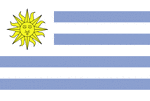
Flag of Uruguay, 2009
Color flag of Uruguay. Nine equal horizontal stripes of white (top and bottom) alternating with blue;…
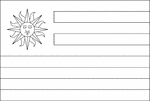
Flag of Uruguay, 2009
Black and white outline flag of Uruguay. Nine equal horizontal stripes of white (top and bottom) alternating…

Flag of Uzbekistan, 2009
Color flag of Uzbekistan. Three equal horizontal bands of blue (top), white, and green separated by…

Flag of Uzbekistan, 2009
Black and white outline flag of Uzbekistan. Three equal horizontal bands of blue (top), white, and green…
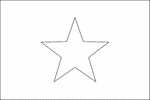
Flag of Vietnam, 2009
Black and white outline flag of Vietnam. Red field with a large yellow five-pointed star in the center

Flag of Virgin Islands, 2009
Color flag of Virgin Islands. white field with a modified US coat of arms in the center between the…

Flag of Virgin Islands, 2009
Black and white outline flag of Virgin Islands. white field with a modified US coat of arms in the center…

Flag of Wallis and Futuna, 2009
Color flag of Wallis and Futuna. Unofficial, local flag has a red field with four white isosceles triangles…

Flag of Wallis and Futuna, 2009
Black and white outline flag of Wallis and Futuna. Unofficial, local flag has a red field with four…

Flag of Yemen, 2009
Color flag of Yemen. Three equal horizontal bands of red (top), white, and black; similar to the flag…

Flag of Yemen, 2009
Black and white outline flag of Yemen. Three equal horizontal bands of red (top), white, and black;…

Flag of Zimbabwe, 2009
Color flag of Zimbabwe. Seven equal horizontal bands of green, yellow, red, black, red, yellow, and…

Flag of Zimbabwe, 2009
Black and white outline flag of Zimbabwe. Seven equal horizontal bands of green, yellow, red, black,…
Reynard the Fox: Tricking Ereswine in the Well
Reynard the Fox put himself in the bucket of the well, calls, and gets the attention of Ereswine the…
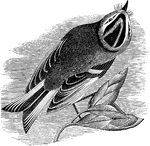
Golden Crested Kinglet
"Upper parts olive-green, more or less bright, sometimes rather olive-ashy, always brightest on the…
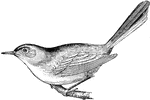
Blue-gray Gnat-catcher
"Grayish-blue, bluer on the crown, hoary on the rump, the forehead black, continuous with a black superciliary…

European Greater Titmouse
"Head not crested. Wings and tail rounded, of approximately equal lengths, and about as long as the…
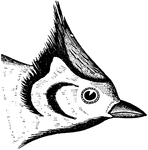
Bridled Titmouse
"Upper parts olivaceous-ash, wings and tail darker, edged with the color of the back, or even a brighter…

Black-capped Chickadee
"Crown and nape, with chin and throat, black, separated by white sides of the head. Upper parts brownish-ash,…

Glossy Abelia
"Ornamental plants, cultivated chiefly for their handsome flowers. The Abelias are small or medium-sized…

Cones of Abies
"Fig. 61- Cones of Abies- From bottom to top, A. concolor (White Fir), A. Nordmanniana (Nordmann Fir),…

Grand Fir Tree Cone
"A. grandis (Grand Fir) - Fig. 60.- tree, 200-300ft.: trunk becoming 4ft. in diam. lvs. thin and flexable,…
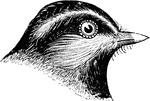
Mountain Chickadee
"Upper part ashy-gray, with scarcely a shade, and only on the rump, under parts similarly grayish-white,…
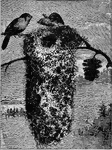
Two Least Bush-Tit Sitting on their Nest
"Dull lead-color, frequently with a brownish or olivaceous shade, the top of the head abruptly darker…
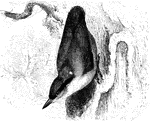
European Nuthatch
"Crown clear hair-brown; a white spot on nape; middle tail-feathers plain." Elliot Coues, 1884.
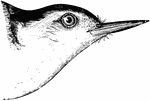
White-Breasted Nuthatch
"Upper parts, central tail-feathers, and much edging of the wings, clear ashy-blue; whole crown, nape,…

Red-breasted Nuthatch
"Upper parts leaden-blue the central tail-feathers the same; wings fuscous, with slight ashy edgings…

Brown-headed Nuthatch
"No black cap or white stripe on head. Upper parts dull ashy-blue; under parts sordid or muddy whitish.…
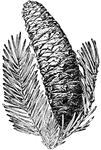
Silver Fir Tree Cone
"Picea, Silver Fir. Fig. 60. Tree, 100-200 ft: trunk 6-8 ft. in dia.: lvs. flat, distichously spreading,…

Crab's-Eye Vine
"Crab's-eye vine. Weather Plant. Fig. 64. - Height 10-12 ft.; frequently trailing over the ground S.:…
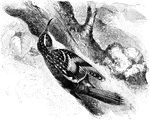
Common Brown Creeper
"Common Brown Creeper. Upper parts dark brown, changing to rusty-brown on the rump, everywhere streaked…

European Wren
"European Wren. Feet strictly laminiplanter, as usual in Oscines. Tail thin, with narrow parallel-edged…

Rock Wren
"Upper parts pale brownish-gray, minutely dotted with blackish and whitish points together, and usually…

Winter Wren
"Winter Wren. Above brown, darker before, brighter behind, most of back, together with tail and inner…
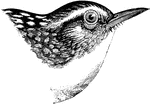
Long-billed Marsh Wren
"Long-billed Marsh Wren. T. palustris. Above clear brown, unbarred, the middle of the back with a large…
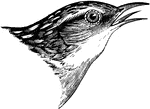
Short-billed Marsh Wren
"Short-billed Marsh Wren. Cistothorus platensis. Upper parts brown, the crown and most of the back blackish,…

Shore Lark
"Shore Lark or Horned Lark. Upper parts in general pinkish-brown, this pinkish or vinaceous or liliaceous…
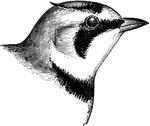
Shore Lark
"Shore Lark or Horned Lark. Upper parts in general pinkish-brown, this pinkish or vinaceous or liliaceous…
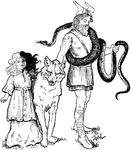
Loki and his Pets
Loki goes into Asgard with his daughter, Hela, and his pets, Jormundgand the serpent, and Fenris the…

Skadi Chooses a Husband
Skadi is a giantess and daughter of Thiassi who was killed while chasing Loki because of a trick. Skadi…

Freya Searching for Odur
Freya searches for her husband Odur in her chariot drawn by two white cats. As she rode, she cried golden…
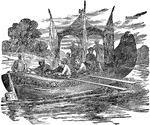
Monroe's Barge
"In June of 1817 President Monroe took a very extensive journey through the States, visiting all the…

Gold Leaf Electroscope
"In the gold-leaf electroscope (invented by Bennet in 1787), two light strips of gold-leaf hang from…

Backgammon Board
"Backgammon, a game played by two persons upon a table or board made for the purpose, with pieces or…
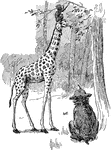
Giraffe Eating Leaves with a Monkey Sitting on Leaves
An illustration of a giraffe eating leaves with a monkey sitting on the giraffe's head.
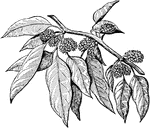
Male Flowers of the Osage-Orange
An illustration of a branch from an osage-orange plant with male flowers. Osage-orange, Horse-apple…
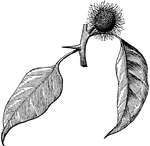
Female Inflorescence of the Osage-Orange
An illustration of a branch from an osage-orange plant with female inflorescence. Osage-orange, Horse-apple…

Male Flower of Osage-Orange
An illustration of a male flower of the osage-orange plant. Osage-orange, Horse-apple or Bois D'Arc…
Female Flower of Osage-Orange
An illustration of a female flower of the osage-orange plant. Osage-orange, Horse-apple or Bois D'Arc…

Female Flower of Osage-Orange Laid Open
An illustration of a female flower of the osage-orange plant laid open. Osage-orange, Horse-apple or…

Leaf of Osage-Orange
An illustration of a leaf of the osage-orange plant showing nervation. Osage-orange, Horse-apple or…

Mackerel Shark
Lamniformes is an order of sharks, also known as mackerel sharks (which may also be used to refer to…

Cap of Maintenance
A Cap of Maintenance is a ceremonial crimson velvet cap lined with ermine. It is one of the insignia…
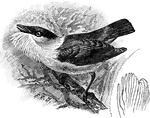
White-bearded Manakin
The White-bearded Manakin, Manacus manacus, is a small passerine bird which breeds in tropical South…
